MARS THERMAL INERTIA ANALYSIS: N. E. Putzig et al
Thermal inertia analysis of the martian globe,
south polar region, and past landing sites
Nathaniel E. Putzig1, Michael T. Mellon1,
Raymond E. Arvidson2,
and Katherine A. Kretke1
1Laboratory for Atmospheric and Space Physics
University of Colorado
2McDonnell Center for Space Sciences
Washington University
Introduction
What we did
- Analyzed MGS thermal inertia, albedo, and elevation data*
- Cross-correlated datasets to define thermophysical units
- Examined units on global, regional, and local scales
* TES- and MOLA-derived maps from Mellon et al (2002)
What we found
- An unusual low thermal inertia, low albedo region poleward of 65°S
- Refined TES-based thermal inertia and albedo for past lander sites
Thermal What?
- Surface temperatures are driven by albedo, dust opacity, atmospheric pressure, and thermal inertia
- Thermal inertia is the key control on diurnal temperature oscillations:
I ≡ ( k ρ C )1/2
[ J m-2 K-1 s-1/2 ]
where:
k = bulk thermal conductivity ≈ kg
+ ks + kr
ρ = bulk density
C = heat capacity
I depends primarily on physical properties:
increases with particle size and degree of induration
Thermal skin depth is ~1-3 cm for Mars conditions and materials
Global Thermal Inertia from Mellon et al (2002)

Global TES Albedo
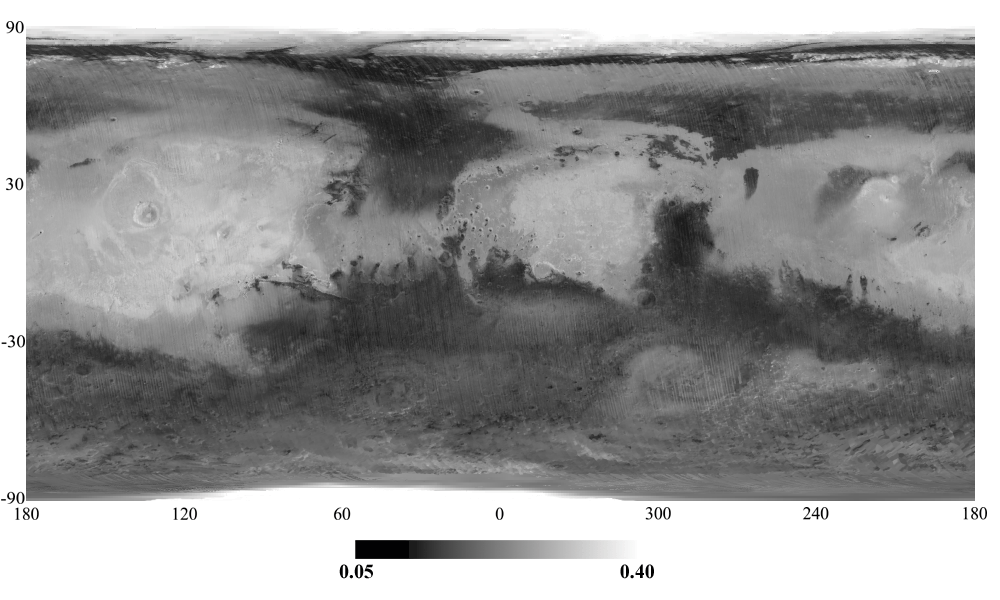
Thermophysical Unit Definition
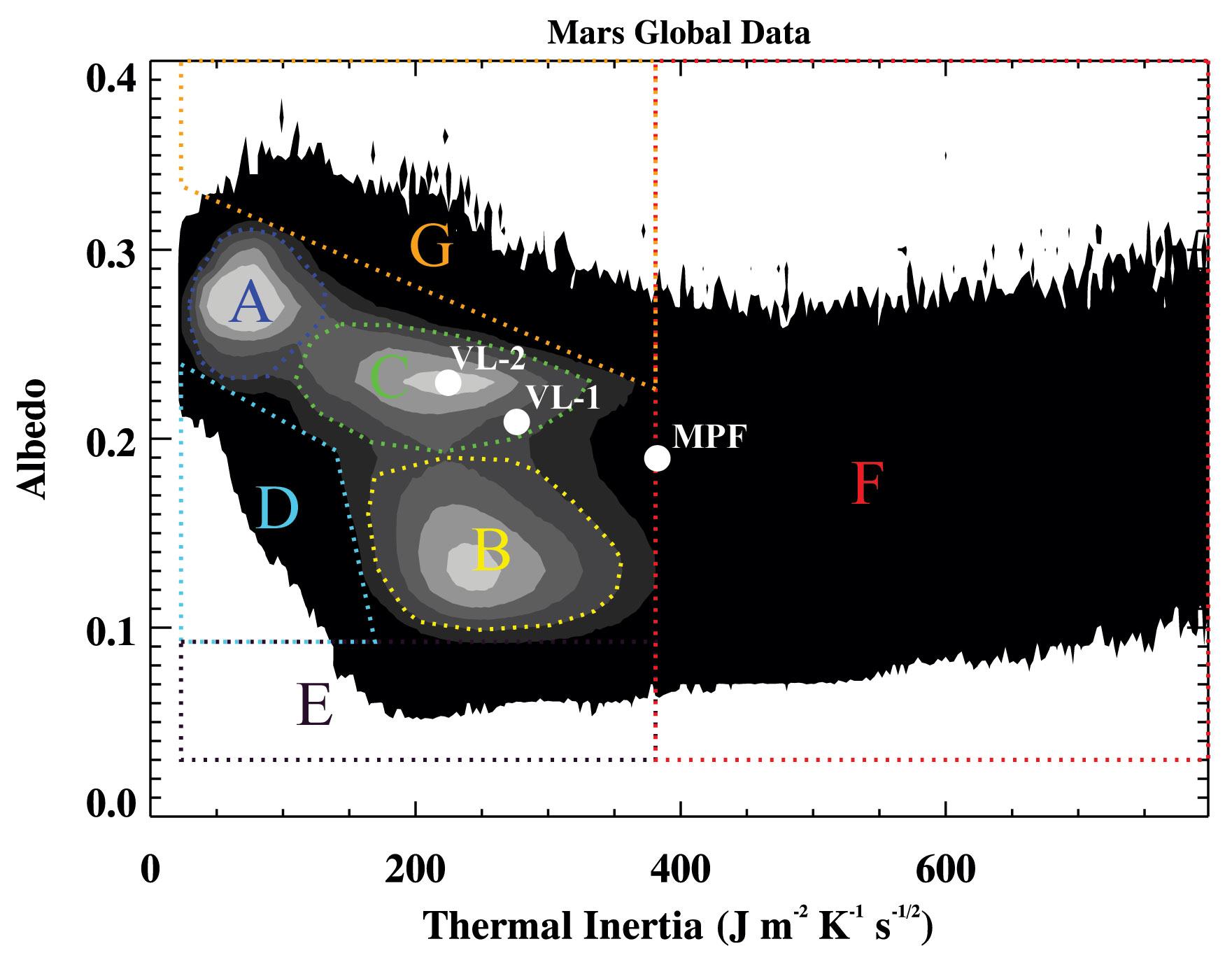
Global Thermophysical Unit Map

Southern Hemisphere Thermal Inertia
0
90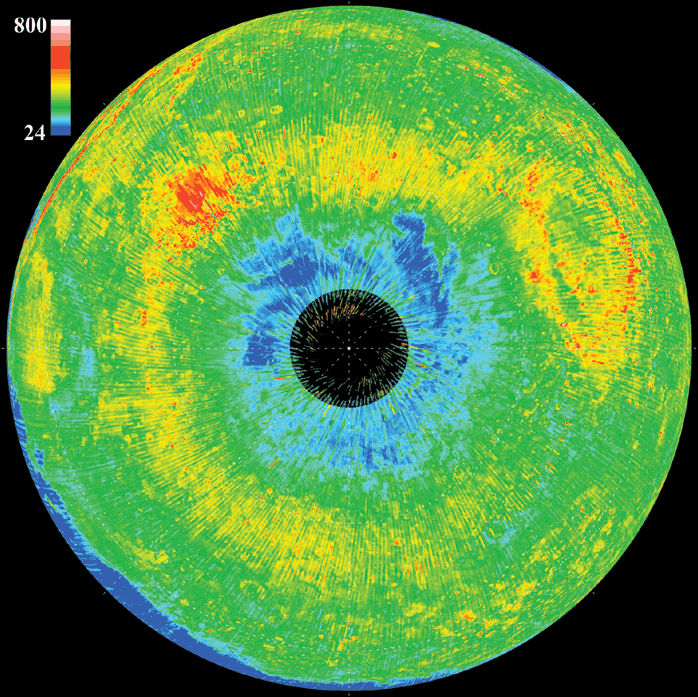 270
270
180
MGS vs. Viking Thermal Inertia: 60°S-80°S
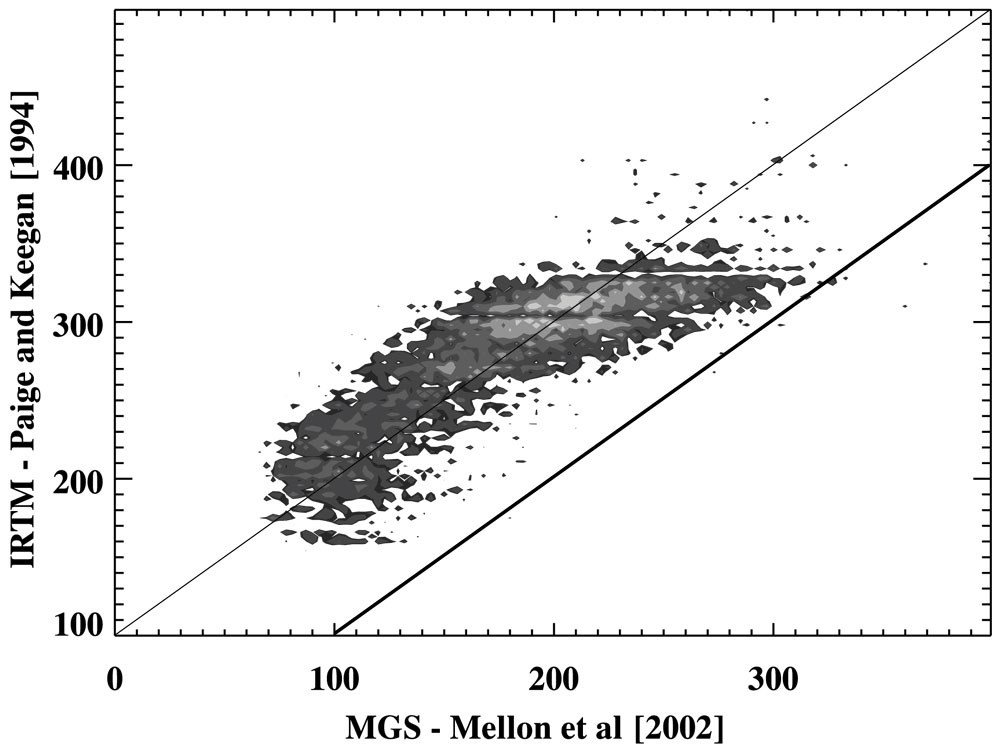
Southern Hemisphere Albedo
0
90 270
270
180
Southern Hemisphere Thermophysical Unit Map
0
90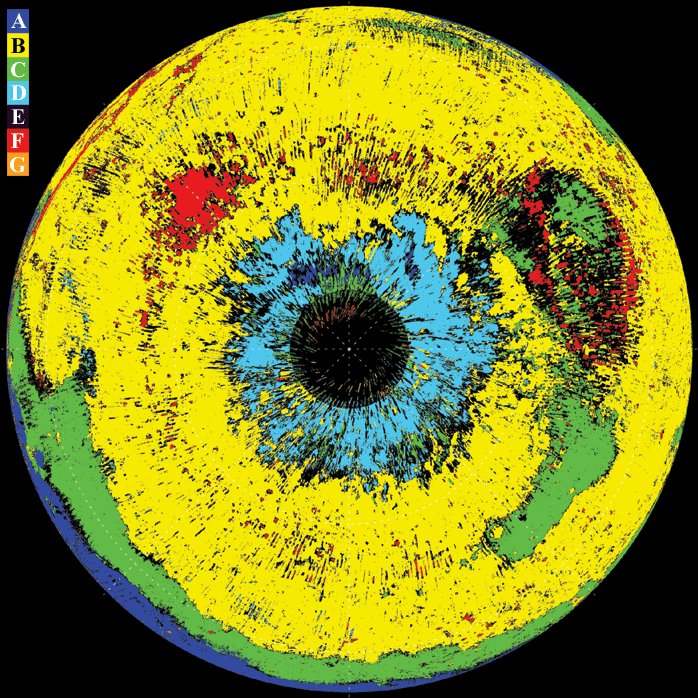 270
270
180
Thermal Inertia and Albedo Controls
Thermal inertia can be lowered by:
- Fining particles (lowers kg)
- Reducing bulk density (lowers ρ, keff)
- Changing composition (can lower {ρ C} by ×2 max )
- Removing cementation (lowers ρ, ks)
Albedo can be lowered by:
- Coarsening particles (reduces backscattering)
- Darkening material:
- Different bulk composition
- Coating particles
- Thermally thin (~ few μm) layer
- Cementation
Hypotheses for the South Pole "Iris"
"Fluffed" soil theory
Thermal inertia reduction by ρ reduction in material ~ Unit B
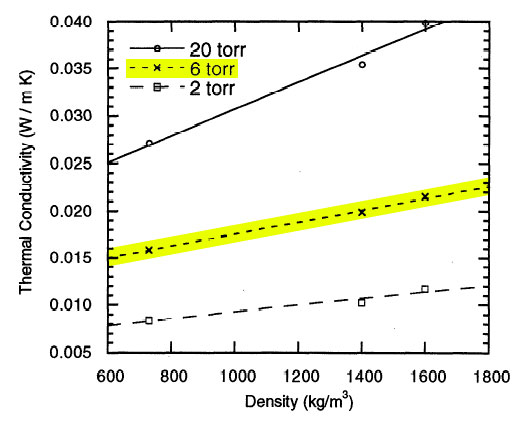
- Presley & Christensen (1997) show for Mars conditions:
k × 1.25 ~ ρ × 2
for 23-30 μm particles. Thus:
I ÷ 2 requires ~ ρ ÷ 2.5
- "Soil" is fluffed by ground ice which subsequently sublimes
- Neutron data show ice up to 75% by volume in polar region (Boynton et al, 2002)
Hypotheses for the South Pole "Iris"
Dark dust theories
Albedo reduction in material with I ~ Unit A
- Darker dust (new bulk composition)
- Need source distinct from bright dust
- Darker layer over bright dust ~ Unit A
- Thermally thin (~few μm) - I controlled by bright dust
- Areal extent large - unstable for long times?
Global storms expected to homogenize dust over years to decades
- Darker coating on bright dust ~ Unit A
- Darkening process must be reversible
Inertia-Albedo Histogram for 30°S to 80°S
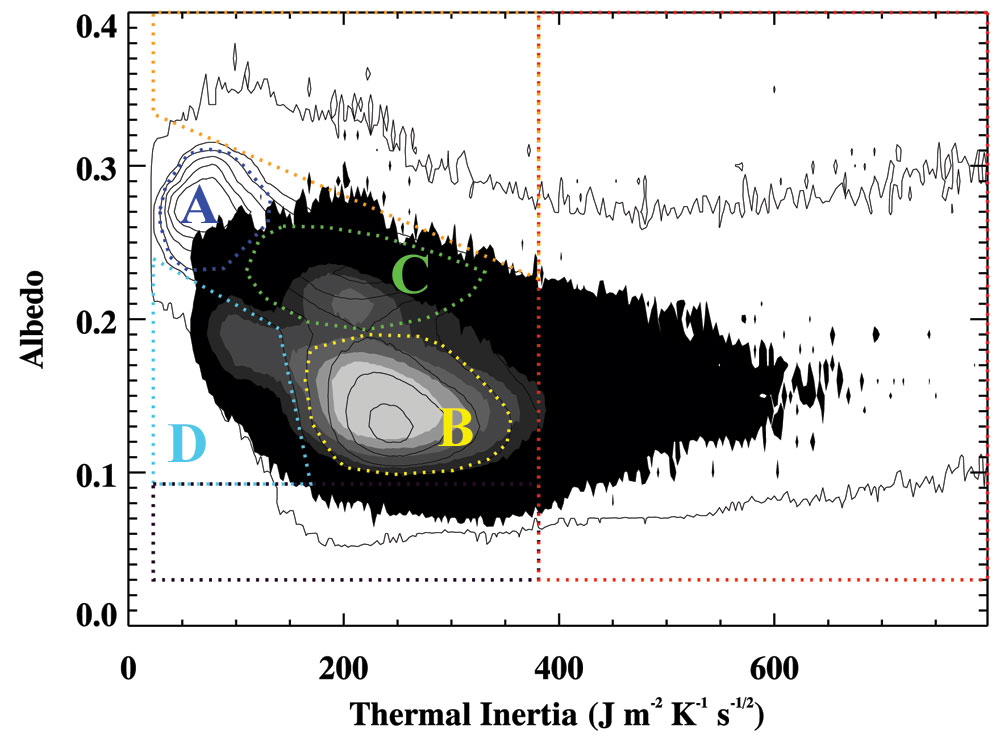
Inertia-Albedo Histogram for 60°S to 80°S
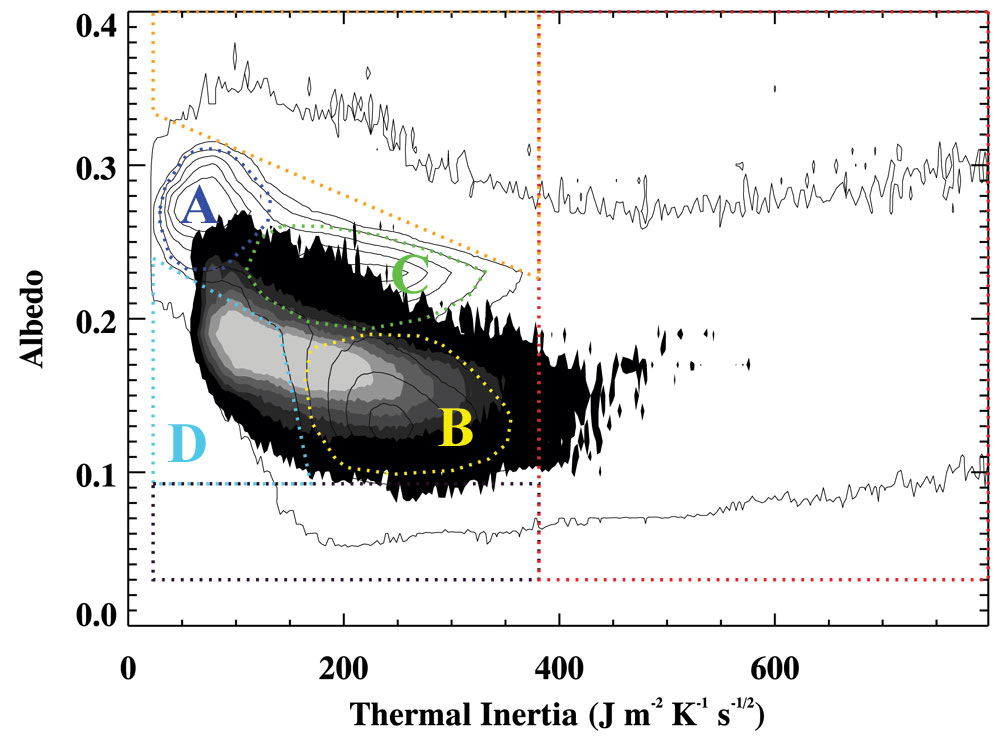
Inertia-Albedo Histogram for 70°S to 80°S
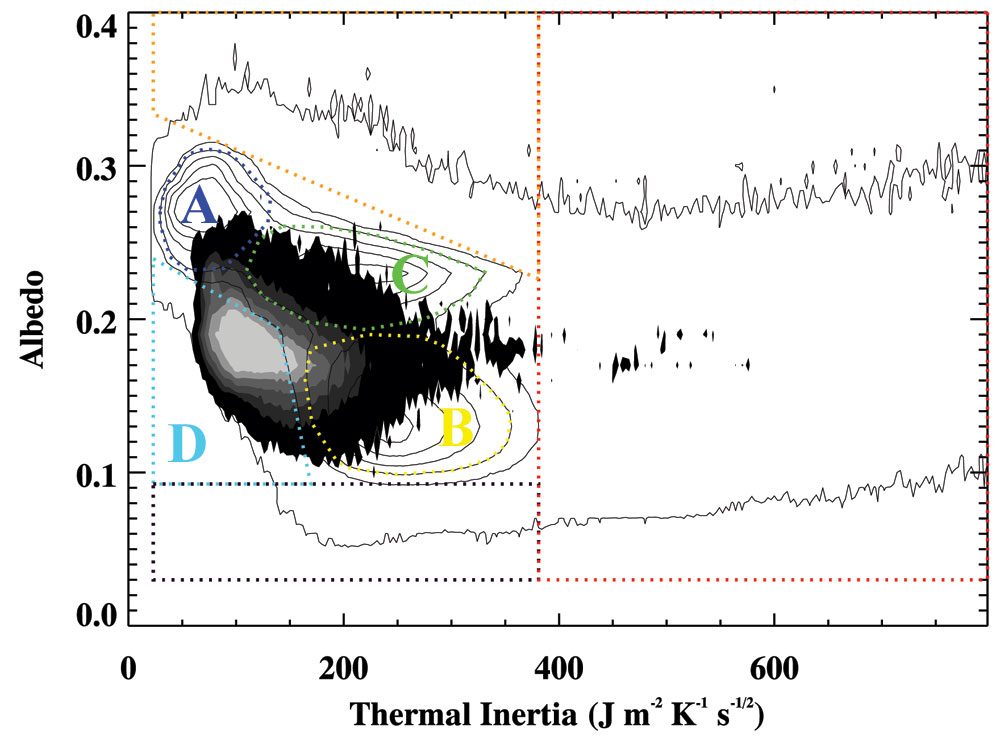
Conclusions
Low thermal inertia, low albedo region poleward of 65°S
- Consistent with Viking thermal inertias (Paige & Keegan, 1994)
- Differs from classic low thermal inertia regions (low I, high A)
- Several hypotheses examined:
- Soil "fluffing": would require ~ ρ ÷ 2.5
- Grain surface darkening: must be reversible
- Darker dust: unlikely due to global circulation
- Continuing analysis will incorporate color data and MOC images
MGS-TES updated lander site data
| Site | Inertia* | Albedo | Unit |
| VL-1 | 283 | 0.22 | C |
| VL-2 | 234 | 0.24 | C |
| MPF | 387 | 0.19 | F |
* Units: J m-2 K-1 s-1/2
By Than Putzig





 270
270

 270
270
 270
270



